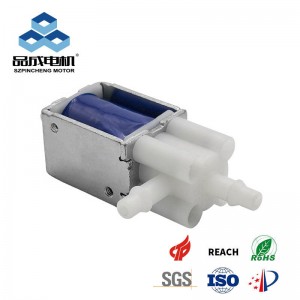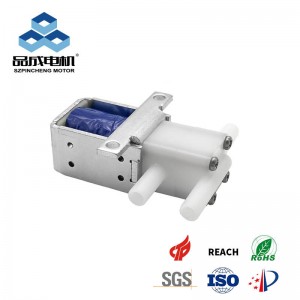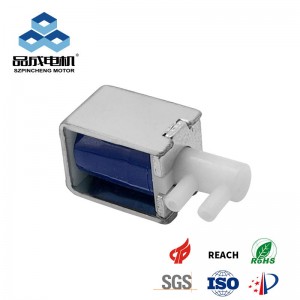Water shut-off valves are the unsung guardians of plumbing systems, acting as critical control points for safety, maintenance, and efficiency. Choosing the right type prevents leaks, reduces water damage risks, and ensures system reliability. Here’s a breakdown of the 7 key valve types, their mechanisms, and where they excel:
1. Ball Valves: The Quarter-Turn Champions
-
How They Work: A stainless steel ball with a bore rotates 90°. Aligns bore with pipe = OPEN; perpendicular = SHUT.
-
Best For: Main water lines, emergency shut-offs.
-
Why Choose:
-
Zero leakage when closed
-
500,000+ cycle lifespan (e.g., Pinya’s brass ball valves)
-
Instant on/off control
-
-
Limitations: Not for flow throttling.
2. Gate Valves: The Reliable Workhorses
-
How They Work: A wedge-shaped "gate" lifts/lowers via a handwheel to block/allow flow.
-
Best For: Low-frequency shut-offs (e.g., main supply lines).
-
Why Choose:
-
Full-bore design = minimal pressure drop
-
Bi-directional sealing
-
-
Limitations:
-
Slow operation (multiple turns)
-
Prone to corrosion/seizing over time
-
3. Globe Valves: Precision Flow Regulators
-
How They Work: A plug (disc) presses against a seat to restrict flow. Ideal for throttling.
-
Best For: Balancing/regulating flow (e.g., HVAC, irrigation).
-
Why Choose:
-
Accurate flow control
-
Easy maintenance
-
-
Limitations: High pressure drop (Z-shaped flow path).
4. Butterfly Valves: Compact & Cost-Effective
-
How They Work: A disc rotates 90° on a central axis. Parallel to flow = OPEN; perpendicular = CLOSED.
-
Best For: Large pipes (HVAC, industrial).
-
Why Choose:
-
Lightweight & affordable
-
Fast operation
-
-
Limitations:
-
Potential leakage at high pressure
-
Disc obstructs flow even when open
-
5. Solenoid Valves: Smart Automation
-
How They Work: Electromagnet lifts plunger to open orifice (powered). Closes when de-energized.
-
Best For: Automated systems (e.g., coffee machines, irrigation).
-
Why Choose:
-
Millisecond response time
-
Remote/PLC control (e.g., Pincheng’s PYF series)
-
≤0.5 sec operation (NSF-certified models)
-
-
Limitations: Requires power; limited for high-viscosity fluids.
6. Check Valves: Backflow Preventers
-
How They Work: Allow flow in one direction only (swing, lift, or spring design).
-
Best For: Preventing contamination (boilers, sewage lines).
-
Why Choose:
-
Zero backflow risk
-
No manual intervention needed
-
-
Limitations: Not designed for shut-off; flow-dependent.
7. Angle Stop Valves: Space-Saving Heroes
-
How They Work: Compact 90°-bend valves under sinks/toilets.
-
Best For: Localized fixture shut-offs.
-
Why Choose:
-
Easy access for repairs
-
Compression or push-to-connect install
-
Valve Selection Guide: Matching Type to Task
| Need | Top Valve Choice | Key Specs |
|---|---|---|
| Emergency shut-off | Ball valve | 1,000 PSI rating, brass/stainless body |
| Flow throttling | Globe valve | Precision stem, replaceable disc |
| Automated control | Solenoid valve | 12V/24V DC, IP67 seal (e.g., PYF3-XF) |
| Backflow prevention | Swing check valve | Low cracking pressure (0.5 PSI) |
| High-volume pipelines | Butterfly valve | Lug/wafer style, EPDM seals |
Pro Installation & Maintenance Tips
-
Avoid Leaks: Use thread seal tape (PTFE) on male threads.
-
Access Matters: Install valves within 3 ft of appliances (local codes).
-
Test Quarterly: Turn valves off/on to prevent seizing.
-
Upgrade Smart: Replace gate valves with ball valves for reliability.
Did You Know? 10% of homes have hidden valve failures. Modern ball valves last 20+ years vs. gate valves’ 8–10.
Final Takeaway
From manual ball valves to AI-controlled solenoids, choosing the right shut-off valve prevents disasters and optimizes performance. For mission-critical systems, explore certified valves like Pincheng’s zero-leak ball valves or corrosion-resistant solenoids—where engineering precision meets real-world durability.
you like also all
Read More News
Post time: Jul-30-2025




